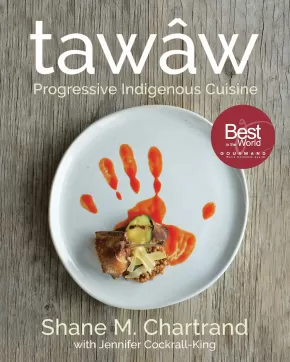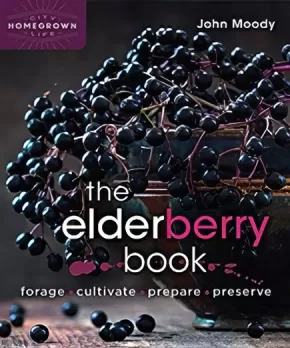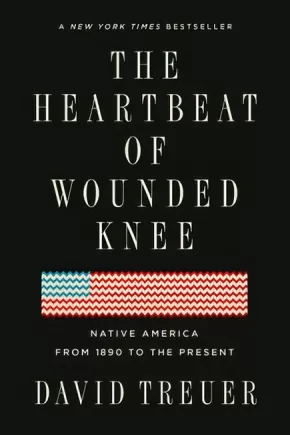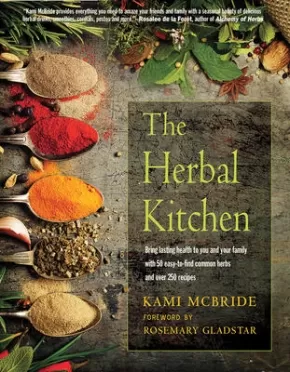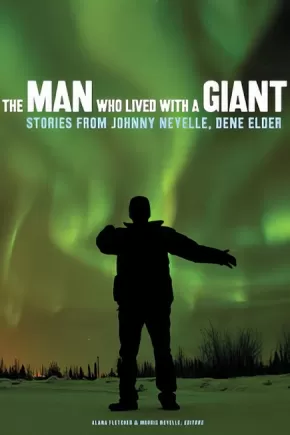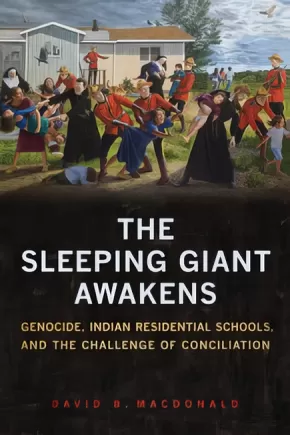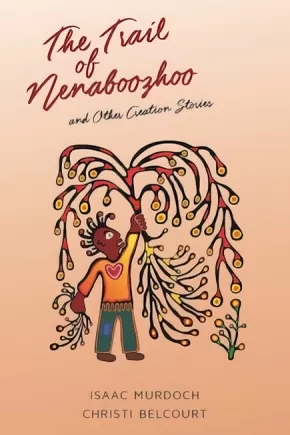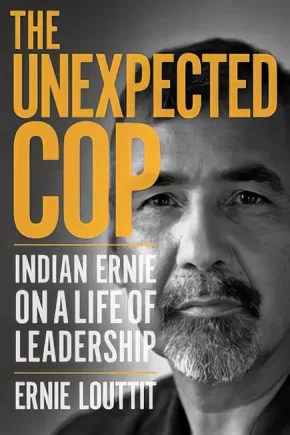Non-Fiction
Synopsis:
Dispatches of radical political engagement from people taking a stand against the Dakota Access Pipeline.
It is prophecy. A Black Snake will spread itself across the land, bringing destruction while uniting Indigenous nations. The Dakota Access Pipeline is the Black Snake, crossing the Missouri River north of the Standing Rock Indian Reservation. The oil pipeline united communities along its path—from North Dakota, South Dakota, Iowa, and Illinois—and galvanized a twenty-first-century Indigenous resistance movement marching under the banner Mni Wiconi—Water Is Life! Standing Rock youth issued a call, and millions around the world and thousands of Water Protectors from more than three hundred Native nations answered. Amid the movement to protect the land and the water that millions depend on for life, the Oceti Sakowin (the Dakota, Nakota, and Lakota people) reunited. A nation was reborn with renewed power to protect the environment and support Indigenous grassroots education and organizing. This book assembles the multitude of voices of writers, thinkers, artists, and activists from that movement.
Through poetry and prose, essays, photography, interviews, and polemical interventions, the contributors, including leaders of the Standing Rock movement, reflect on Indigenous history and politics and on the movement’s significance. Their work challenges our understanding of colonial history not simply as “lessons learned” but as essential guideposts for current and future activism.
Contributors: Dave Archambault II, Natalie Avalos, Vanessa Bowen, Alleen Brown, Kevin Bruyneel, Tomoki Mari Birkett, Troy Cochrane, Michelle L. Cook, Deborah Cowen, Andrew Curley, Martin Danyluk, Jaskiran Dhillon, Roxanne Dunbar-Ortiz, Liz Ellis, Nick Estes, Marcella Gilbert, Sandy Grande, Craig Howe, Elise Hunchuck, Michelle Latimer, Layli Long Soldier, David Uahikeaikalei‘ohu Maile, Jason Mancini, Sarah Sunshine Manning, Katie Mazer, Teresa Montoya, Chris Newell, The NYC Stands with Standing Rock Collective, Jeffrey Ostler, Will Parrish, Shiri Pasternak, endawnis Spears, Alice Speri, Anne Spice, Kim TallBear, Mark L. Tilsen, Edward Valandra, Joel Waters, Tyler Young.
Reviews
"As our songs and prayers echo across the prairie, we need the public to see that in standing up for our rights, we do so on behalf of the millions of Americans who will be affected by this pipeline."—David Archambault II, from the interior
"There is no alternative to water. There is no alternative to this Earth. This fight has become my life, and it’s not over. I think this is only the beginning for me, for all of us. Do you want a future for your children and grandchildren? If you want them to have a future then stand with Standing Rock because this is just the beginning of a revolution."—Zaysha Grinnell, from the interior
"We will put our best warriors in the front. We are the vanguard. We are the Hunkpapa Lakota. That means the horn of the buffalo. That’s who we are. We are protectors of our nation of Oceti Sakowin, the Seven Council Fires. Know who we are."—Phyllis Young
Additional Information
448 pages | 7.00" x 9.00"
Synopsis:
A teen's suspicious death, a shocking police cover-up and a mother's search for truth: this landmark investigation into justice and Canada's Indigenous people is re-issued and updated here for the first time in over a decade.
In 1990, on a brutally cold night, 17-year-old Neil Stonechild disappeared from downtown Saskatoon, last seen in police custody. His frozen body was found three days later in a field outside town. Though his mother pressed for answers, a cursory investigation pinned the blame on the teen himself, dead by alcohol and misadventure. Only in 2000, when two more men were found frozen to death, and a third survived his "starlight tour" at the hands of police, did the truth about Stonechild's fate begin to emerge. Soon one of the country's most prominent Indigenous lawyers was on the case, and an open secret was secret no more.
With exclusive co-operation from the Stonechild family, lawyer Donald Worme, and others, Starlight Tour is an engrossing portrait of rogue cops, racism, obstruction of justice and justice denied, not only to a boy and his family but to an entire nation.
Reviews
“For justice junkies like myself, this is a deeply engrossing account…. Should be compulsory reading for Canadian police recruits from sea to shining sea.” –William Deverell, The Globe and Mail
“The Stonechild story is ably captured by veteran CBC journalists Susanne Reber and Robert Renaud in a thoroughly researched, deftly written work…. A powerfully written, meticulously researched work with a cinematic feel, which should be on reading lists for students of Canadian history, journalism or law enforcement.” –Toronto Star
“The suspenseful and meticulous account of a very real and dark chapter in Canada’s modern history.” –TIME (Canada)
Additional Information
448 pages | 6.04" x 8.98"
Synopsis:
The devil is in the details-the science and art of designing and building durable, efficient, straw bale buildings.
Straw-bale buildings promise superior insulation and flexibility across a range of design aesthetics, while using a typically local and abundant low-embodied energy material that sequesters carbon--an important part of mitigating climate change.
However, some early strawbale designs and construction methods resulted in buildings that failed to meet design goals for energy efficiency and durability. This led to improved building practices and a deeper understanding of the building science underlying this building system.
Distilling two decades of site-built straw bale design and construction experience, Straw Bale Building Details is an illustrated guide that covers:
- Principles and process of straw bale design and building, options, and alternatives
- Building science of straw bale wall systems
- How design impacts cost, building efficiency, and durability
- Avoiding costly mistakes and increasing construction efficiency
- Dozens of time-tested detailed drawings for straw bale wall assemblies, including foundations, windows and doors, and roofs.
Whether you're an architect, engineer, contractor, or owner-builder interested in making informed choices, Straw Bale Building Details is the indispensable guide to current practice in straw bale design and construction.
Additional Information
288 Pages | 8.60" x 11.00"
Synopsis:
Acclaimed chef Shane M. Chartrand's debut cookbook explores the reawakening of Indigenous cuisine and what it means to cook, eat, and share food in our homes and communities.
tawâw [ta-wow; Cree]: “Welcome, there is room.”
Born to Cree parents and raised by a Métis father and Mi’kmaw-British mother, Shane M. Chartrand has spent the past fifteen years learning about his history, visiting with other First Nations peoples, gathering and sharing knowledge and stories, and creating dishes that combine his diverse interests and express his unique personality. The result is tawâw: Progressive Indigenous Cuisine, a gorgeous book that traces Chartrand’s culinary journey from his childhood in Central Alberta, where he learned to raise livestock, hunt, and fish on his family’s acreage, to his current position as executive chef at the acclaimed SC Restaurant in the River Cree Resort & Casino in Enoch, Alberta, on Treaty 6 Territory.
Containing over seventy-five recipes — including his award-winning dish “War Paint” — along with personal stories, interviews with Chartrand’s culinary influences and family members, and contemporary and archival photographs of his journey, tawâw is part cookbook, part exploration of ingredients and techniques, and part chef’s personal journal — a visionary book that will invite readers to leaf through its pages for ideas, education, recipes, and inspiration.
Additional Information
304 pages | 8.00" x 10.00" | full-colour photography throughout
Synopsis:
Within Turtle Island Indigenous people know that its spiritual centre is the ultimate mover within everything we do and are surrounded by. The Clean Place: Honouring Indigenous Spiritual Roots of Turtle Island illuminates the strong connection Indigenous people have with the land and the importance of a paradigm shift worldwide toward sustainable ways of thinking and being. The voices and perspectives of the writers weave traditional teachings, spirituality, and messages of hope, change, and transformation.
Reviews
"Hankard’s compilation takes us on a journey throughout Turtle Island and beyond, across sacred oceans to the ancestral homelands of our relatives. This journey illuminates a connecting theme of Indigenous existence on, from and with the land as a sacred being. Upon a shared reading of a chapter with my son, it was clear he embodied the teachings within – he was doing his part in maintaining the Clean Place." - Cindy Peltier, PhD, Chair Indigenous Education Nipissing University
Educator Information
Table of Contents
Dedication
Acknowledgement
Gchi-Biimskogaabiwiding
Introduction
Michael Hankard
1. I Still Have the Place
Lorraine Rekmans
2. Unsettling the Clean Place: Beginnings of a Philosophical Reflection
Réal Fillion
3. Giving Thanks for the Light
Ross Hoffman
4. In Place and Time: Indigenous Women’s Re-Weaving and Resistances
Laura Hall
5. The Healing Journey: Spirituality, Cultural Connection and the Significance of Aboriginal Peoples Relationship to the Land
John E. Charlton & John G. Hansen
6. Honouring Papatuanuku: Honouring Mother Earth
Taima Moeke-Pickering
7. Stewards of the Sacred
Cynthia Landrum
8. A Buffalo’s Breath on a Cold Winter Morning
Michael Hankard
9. Wahi Pana: A Hawaiian Sense of Place and Relationship to the Land
Umi Perkins
10. The Land is One with Us, and We are One with the Land: A Personal Journal
Emily Faries
11. Caring for Past/Present/Future Through Anishinabe Photography on the Land
Celeste Pedri-Spade
12. Washed ‘Clean’ in Zimbabwe: The Dzivaguru Creation Story
Collis G. Machoko
13. Reflections on Urban Connections to Land and Ceremony: Uncovering the Virtues of Creativity, Cultural Resiliency, Flexibility and Tenacity
Barbara Waterfall
14. Biinidsa: Going Home to Clean Up
Kevin FitzMaurice
Epilogue: Clean Water in the ‘Clean Place’?
Maurice Switzer
About the Authors
Additional Information
251 pages | 6.00" x 9.00"
Synopsis:
Your go-to guide for everything from cultivation to wine-making with one of humanity's oldest plant friends
Once a staple in homes across the world, and found along every highland, highway, and hedgerow, the forgotten elderberry is making a comeback. Its popularity as medicine is surging, its choice as an edible landscaping plant is growing, and its use for wine-making and crafts is being rediscovered.
Spanning history and geography, The Elderberry Book takes you on an adventure, deepening your appreciation of a plant that has played a crucial role across the world for thousands of years. Through this fun, inspirational, and educational resource, discover:
- Elderberry's amazing history
- Cultivating and foraging, from the balcony to the backyard
- Various traditional food and medicine preparations
- Simple wine-making techniques
- Traditional crafts and tools.
This is the definitive guide to the many uses of elderberry; no matter where you are, one of humankind's oldest plant friends can provide you with anything from syrup to wine to dyes, and more.
This book will be of interest to homesteaders, gardeners, herbalists, and people interested in folk history and crafts.
Educator & Series Information
Elderberries trees are widespread and naturalized in temperate Canadian regions including the Maritimes, British Columbia, and Ontario.
Useful, fun, inspirational and educational book that covers history, cultivation, foraging, traditional use, medicines, herbal remedies and tools from the elderberry tree.
Includes:
- Recipes
- Plans for crafts made from elderberry wood including a flute, a pencil, and even a bug hotel.
- Professional illustrations and full-colour photographs.
This book is part of the Homegrown City Life Series:
You’d like to be self-sufficient, but the space you have available is tighter than your budget. If this sounds familiar, the Homegrown City Life series was created just for you! Authors of this series will help you navigate the wide world of homesteading, regardless of how big (or small!) your space and budget may be. Topics range from cheesemaking to gardening and composting—everything the budding urban homesteader needs to succeed!
- Increase your self-reliance
- Take back DIY skills
- Work with the space you have, apartment balcony or suburban backyard
Learn about fermenting, crafting, growing, preserving, and other skills for the urban homesteader.
Additional Information
128 pages | 7.50" x 9.00"
Synopsis:
Step-by-step Questions and Answers with detailed color photographs for easy identification.
The Firefly Guide to Minerals, Rocks and Gems is designed for easy and reliable identification of minerals, gems and rocks. The identification process begins with the stone's streak color, which is how the book is organized: Blue, Red, Yellow, Brown, Green Black and White. Using a sequence of straightforward questions and answers -- aided by over 1,000 photographs and drawings -- the book narrows down the possibilities among 350 minerals, gems and rocks to reach the conclusive classification.
Identification is then further narrowed down with respect to Crystal form, Hardness, Luster, Density, Cleavage, Break and Tenacity. Each rock's main photograph shows the general or typical view, and identification tips about features are noted in the margins of the respective page.
Similar stones are presented for comparison and tips are provided that can eliminate imposters. Drawings show the mineral's crystal shape. The chemical formula reveals the elements from which the mineral is composed. There is also information about where the stone is typically found and some of the ways that humans have utilized it.
Packed with beautiful photographs of earth's many rocks, minerals and gems, The Firefly Guide to Minerals, Rocks and Gems is perfect for amateur mineralogists and collectors.
Additional Information
256 pages | 4.50" x 7.50" | 1043 colour photos, 257 b&w photos, glossary, index | Paperback
Synopsis:
"Chapter after chapter, it's like one shattered myth after another." - NPR
A New York Times bestseller: The sweeping history–and counter-narrative–of Native American life from the Wounded Knee massacre to the present.
The received idea of Native American history–as promulgated by books like Dee Brown’s mega-bestselling 1970 Bury My Heart at Wounded Knee–has been that it essentially ended with the 1890 massacre at Wounded Knee. Not only did one hundred fifty Sioux die at the hands of the U. S. Cavalry, the sense was, but Native civilization did as well. Growing up Ojibwe on a reservation in Minnesota, training as an anthropologist, and researching Native life past and present for his nonfiction and novels, David Treuer has uncovered a different narrative, one of unprecedented resourcefulness and reinvention.
Melding history with reportage and memoir, Treuer traces the tribes’ distinctive cultures from first contact, exploring how the depredations of each era spawned new modes of survival. The devastating seizures of land gave rise to sophisticated legal and political maneuvering that put the lie to the myth that Indians don’t know or care about property. The forced assimilation of their children at government-run boarding schools incubated a unifying Native identity. Conscription in the US military and the pull of urban life brought Indians into the mainstream, even as it steered the emerging shape of self-rule and spawned a new generation of resistance. The Heartbeat of Wounded Knee is the essential, intimate story of a resilient people in a transformative era.
Reviews
“An informed, moving and kaleidoscopic portrait of ‘Indian survival, resilience, adaptability, pride and place in modern life.’ Rarely has a single volume in Native American history attempted such comprehensiveness . . . Ultimately, Treuer’s powerful book suggests the need for soul-searching about the meanings of American history and the stories we tell ourselves about this nation’s past.” —New York Times Book Review
“In a marvel of research and storytelling, an Ojibwe writer traces the dawning of a new resistance movement born of deep pride and a reverence for tradition. Treuer’s chronicle of rebellion and resilience is a manifesto and rallying cry.” —O, The Oprah Magazine
“Treuer is an easy companion: thoughtful, provocative and challenging. He tells a disturbing yet heroic story that may very well be seen as a definition of ‘American exceptionalism.’” —Washington Post
“Sweeping, essential history...Treuer’s storytelling skills shine...[an] elegant handling of [a] complex narrative.” —The Economist
“Treuer provides a sweeping account of how the trope of the vanishing Indian has distorted our current understanding of Native peoples. Instead of seeing Wounded Knee as the final chapter, he recovers the importance of World War II, urban migration, casinos, and the computer age in reshaping the modern Native American experience. The Heartbeat of Wounded Knee is written with conviction and illuminates the past in a deeply compelling way.” —Nancy Isenberg, author of White Trash: The 400-Year Untold History of Class in America
“An ambitious, gripping, and elegantly written synthesis that is much more than the sum of its excellent parts—which include a rich array of Native lives, Treuer’s own family and tribe among them--The Heartbeat of Wounded Knee brings a recognition of indigenous vitality and futurity to a century of modern Indian history.” —Philip J. Deloria, Professor of History, Harvard University
Additional Information
528 pages | 5.50" x 8.25" | 11 maps and photos throughout
Synopsis:
"Kami McBride provides everything you need to amaze your friends and family with a seasonal bounty of delicious herbal drinks, smoothies, cordials, pestos and more." - Rosalee de la Forêt, author of Alchemy of Herbs
Herbs are a gift from nature. They not only help to create aromatic and delicious food, they also support overall health and wellness on a daily basis. Using dried and fresh herbs in your cooking boosts your intake of vitamins and minerals, improves digestion, strengthens immunity, and increases energy. Using plants as medicine is an ancient and powerful tradition that connects you to the earth, helps treat common ailments, promote restful sleep, relaxation, and more.
The Herbal Kitchen will help you recognize the extraordinary pharmacy that probably already exists in your own kitchen. With 50 easy-to-find herbs and spices, information and tips for preparing, storing, and using them, and over 250 simple, flavorful recipes, it will empower you to care for your health.
Whether you are already familiar with herbs or are just starting out on the herbal path, Kami McBride offers recipes for everyone. Mix up refreshing drinks, infuse oil, vinegar and honey, learn how to make tinctures and cordials, salts, sprinkles, and more.
Reviews
"Thank you Kami, for bringing back the value of herbs and spices in The Herbal Kitchen. An inspiration for both new and advanced herbalists alike, this book combines herbalism with nutrition in a user-friendly, inexpensive way. What better way to take a culinary trip around the world, play with flavor, and bring us back home to growing our own fresh herbs?" —DeAnna Batdorff, Founder of the dhyana Center
"The Herbal Kitchen is written by a practicing herbalist, seasoned gardener, and medicine maker (no armchair herbalist here!) Kami has imbued this book with a sense of joy, practical knowledge and deep wisdom and with her guidance, you will deepen your knowledge and understanding of the many healing herbs and foods found in your kitchen." —Candis Cantin, Author of The Herbal Tarot and Pocket Guide to Ayurvedic Healing
"Plants have long been humanity's powerful and generous allies, providing us with daily nourishment, wellness, support, and joy. The more we commune with these botanical friends, the more they enrich our lives, and The Herbal Kitchen inspires us to invite them to each and every meal. If you long for food filled with nature's color, vitality, and love, this is the guide you seek." —Julie Bailey, herbalist, gardener, and co-owner of Mountain Rose Herbs
"A joyful celebration of practical, sensual herbal recipes! Kami's beautiful new book brims with delicious recipes that help budding herbalists and gardeners discover the bounty in their backyard. The recipes are simple and practical yet creative - the unique combinations of flavors excite the senses and teach you how to better enjoy herbs and spices. Together, they indulge you in the herbal lifestyle - not just for medicine, but plants and recipes that perk up your senses and make life more pleasurable." —Maria Noël Groves, herbalist and author of Body into Balance and Grow Your Own Herbal Remedies
"Kami McBride provides everything you need to amaze your friends and family with a seasonal bounty of delicious herbal drinks, smoothies, cordials, pestos and more." —Rosalee de la Forêt, author of Alchemy of Herbs
"Kami McBride has created an essential, comprehensive, and beautifully written book. It shows us the way to weave the practical magic of herbal remedies - cooking, gathering, making medicine - into the strands of our lives and the lives of our loved ones. Illuminated with personal anecdotes, it is easily accessible to beginners and inspiring to seasoned herbalists. The Herbal Kitchen is a beautiful recipe for self - empowerment and reconnection to the natural world." —Donna Chesner, Southwest School of Botanical Studies
Additional Information
304 pages | 7.00" x 9.00" | spot art throughout
Synopsis:
Our parents always taught us well. They told us to look on the good side of life and to accept what has to happen.
The Man Who Lived with a Giant presents traditional and personal stories told by Johnny Neyelle, a respected Dene storyteller and Elder from Déline, Northwest Territories. Johnny Neyelle used storytelling to teach Dene youth and others to understand and celebrate Dene traditions and identities. Johnny’s entertaining voice makes his stories accessible to readers young and old, and his wisdom reinforces the right way to live: in harmony with people and places. Storytelling forms the core of Dene knowledge-keeping. A volume dedicated to making Dene culture strong, The Man Who Lived with a Giant is a vital book for Dene readers, researchers working with Indigenous cultures and oral histories, and scholars preserving Elders’ stories. Even more, it is a book for the Dene people of today and tomorrow.
Additional Information
152 pages | 6.00" x 9.00"
Synopsis:
The astonishing true story of one of the first wolves to roam Yellowstone in more than 60 years.
Yellowstone National Park was once home to an abundance of wild wolves—but park rangers killed the last of their kind in the 1920s. Decades later, the rangers brought them back, with the first wolves arriving from Canada in 1995.
This is the incredible true story of one of those wolves.
Wolf 8 struggles at first—he is smaller than the other pups, and often bullied—but soon he bonds with an alpha female whose mate was shot. An unusually young alpha male, barely a teenager in human years, Wolf 8 rises to the occasion, hunting skillfully, and even defending his family from the wolf who killed his father. But soon he faces a new opponent: his adopted son, who mates with a violent alpha female. Can Wolf 8 protect his valley without harming his protégé?
Authored by a renowned wolf researcher and gifted storyteller, The Rise of Wolf 8 marks the beginning of an original and bold new trilogy, which will transform our view of wolves forever.
Reviews
"Rick’s book is a testament to the irreplaceable value of direct and long term observation of wild animals in their habitat. No trick of modern technology will ever be able to catch the subtleties of the messages sent by just a glance or the sophisticated mechanisms of leadership in a wolf pack. This book will tell you all this and much more: its contribution to wolf biology is immense, for scientists as well as for wolf lovers." —Luigi Boitani, Honorary Professor, Department of Biology and Biotechnologies, University of Rome, Italy
"McIntyre has here written the captivating story of individual wolves and their personalities in their natural setting of competing with other packs, starting with those reintroduced into Yellowstone Park. Their stories will become a classic in animal behavior, with impacts reaching into ecology, conservation biology, and comparisons to human social evolution. All is presented with skill and verve to be accessible to a wide audience."—Bernd Heinrich, PhD, professor emeritus of biology at the University of Vermont and author of Mind of the Raven
Educator Information
Book One in The Alpha Wolves of Yellowstone: A Trilogy.
Additional Information
304 pages | 5.50" x 8.50"
Synopsis:
The Skillful Forager is the ultimate forager’s guide to working with any wild plant in the field, kitchen, or pantry.
From harvesting skills that will allow you to gather from the same plant again and again to highlighting how to get the most out of each and every type of wild edible, trusted expert Leda Meredith explores the most effective ways to harvest, preserve, and prepare all of your foraged foods. Featuring detailed identification information for over forty wild edibles commonly found across North America, the plant profiles in this book focus on sustainable harvesting techniques that can be applied to hundreds of other plants. This indispensable reference also provides simple recipes that can help you make the most of your harvest each season.
Reviews
"This is a book that needed to be written—an invaluable resource for anyone who wants to be more than an armchair forager." —Hank Shaw, author of Hunt, Gather, Cook
"Identification is the first task of the forager, but what comes next? It turns out, almost everything. How does one select the best berries, the tenderest greens, the freshest mushrooms, and gather them in an ecologically responsible manner? What is the most practical way to clean, crack, or pit them? How can they be stored? In The Skillful Forager, Leda Meredith answers just these questions, laying out the basic skills that she has perfected through decades of gathering wild plants and using them in the kitchen. She leaves readers with a set of practical, simple, healthy, and delicious recipes that can be adapted to a variety of ingredients, wild or domestic—just the way that real home cooks cook everyday food. Because to Leda, that’s what foraged food is." —Samuel Thayer, author of The Forager’s Harvest
"In The Skillful Forager, Leda Meredith doesn’t just describe some of her favorite wild edibles, she lays the groundwork for you to become a better forager. Leda covers recommended plants and mushrooms, safe and mindful harvesting, and wraps it all up by describing multiple cooking and preservation techniques we all can use to make the most of our harvests. The Skillful Forager takes you from field to table with excellent information, inspiring ideas, and lots of fabulous flavor." —Ellen Zachos, author of Backyard Foraging
Additional Information
296 pages | 6.51" x 8.98"
Synopsis:
Confronting the truths of Canada’s Indian Residential School system has been likened to waking a sleeping giant. In this book, David B. MacDonald uses genocide as an analytical tool to better understand Canada’s past and present relationships between settlers and Indigenous peoples. Starting with a discussion of how genocide is defined in domestic and international law, the book applies the concept to the forced transfer of Indigenous children to residential schools and the "Sixties Scoop," in which Indigenous children were taken from their communities and placed in foster homes or adopted.
Based on archival research and extensive interviews with residential school survivors, officials at the Truth and Reconciliation Commission of Canada, and others, The Sleeping Giant Awakens offers a unique and timely perspective on the prospects for conciliation after genocide, exploring how moving forward together is difficult in a context where many settlers know little of the residential schools and the ongoing legacies of colonization, and need to have a better conception of Indigenous rights. It offers a detailed analysis of how the TRC approached genocide in its deliberations and in the Final Report.
Crucially, MacDonald engages critics who argue that the term genocide impedes understanding of the IRS system and imperils prospects for conciliation. By contrast, this book sees genocide recognition as an important basis for meaningful discussions of how to engage Indigenous-settler relations in respectful and proactive ways.
Additional Information
224 pages | 6.00" x 9.00"
Synopsis:
Nenaboozhoo left us many gifts.
Nenaboozhoo, the creator spirit-being of Ojibway legend, gave the people many gifts. This collection of oral stories presents legends of Nenaboozhoo along with other creation stories that tell of the adventures of numerous beloved animal spirits. The Trail of Nenaboozhoo is a book of art and storytelling that preserve the legends of the Anishinaabe people. Each story is accompanied by strikingly beautiful illustrations by revered Indigenous artists Isaac Murdoch and Christi Belcourt.
Educator & Series Information
From the Forward, by Isaac Murdoch:
"Everything we have can be accredited to the gifts from the spirit world. As we are now in abrupt climate change we can see the world-wide ecological collapse happening before our very eyes. How important was the birch bark canoe? The wigwam? How important were those gifts that were given to us? I think they were very important. They were more than important; they were sacred.
And so its with great hopes and encouragement that I offer these stories as a map to understand how to go back to the old ways. The old people always said we are going to go back to the old ways and I truly believe the time is now. We mustn’t wait.
Nenaboozhoo is a spirit that was brought to the earth who is highly respected to this day by my people. They say when he was in spirit form he went through four levels of power. Through each power he went through he went back to the centre saying he didn’t want to leave. But the Great Mystery told him, “'keep going, keep going, you’re needed somewhere.'
And he made his way through those four powers and ended up on earth. His life here on earth was magical. All the rivers, all of the mountains all of the beautiful colours that we see, were created with Nenaboozhoo and his magical trail on earth. They say one day ten men will go fasting and call Nenaboozhoo back and the world will be new again.
Nothing can stop the power that is here."
This book is part of the Ojibwe History Series.
Recommended in the Canadian Indigenous Books for Schools 2020/2021 resource list for grades 7 to 12 for English Language Arts and Science.
Most stories appear in English and with an Anishinaabemowin translation, but some stories are in English only.
Additional Information
55 pages | 9.00" x 9.00" | 20 illustrations
Synopsis:
The cop who blew the whistle on Saskatoon’s notorious “Starlight Tours,” Ernie Louttit is the bestselling author of two previous “Indian Ernie” books. He demonstrates in this latest title that being a leader means sticking to your convictions and sometimes standing up to the powers that be. One of the first Indigenous officers hired by the Saskatoon Police, he was an outsider who became an insider, with a difference. A former military man with a passion for the law, he was tough on the beat, but was also a role model for kids on the streets.
Reviews
"I read it in one sitting and it left me wanting more" - John Lagimodiere, editor and publisher of Eagle Feather News
“The author fearlessly takes on some of the most problematic public issues of the day…and confronts them with the objective practicality of a thoughtful, observant foreigner.” —Les Macpherson, former editor and columnist with the Saskatoon StarPhoenix
Additional Information
192 pages | 6.00" x 9.00"






